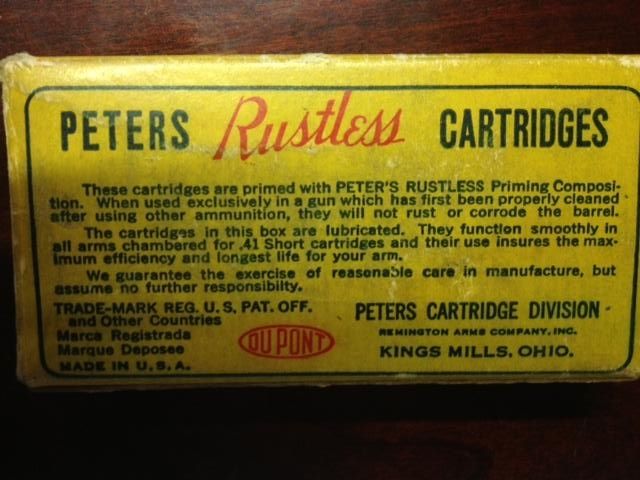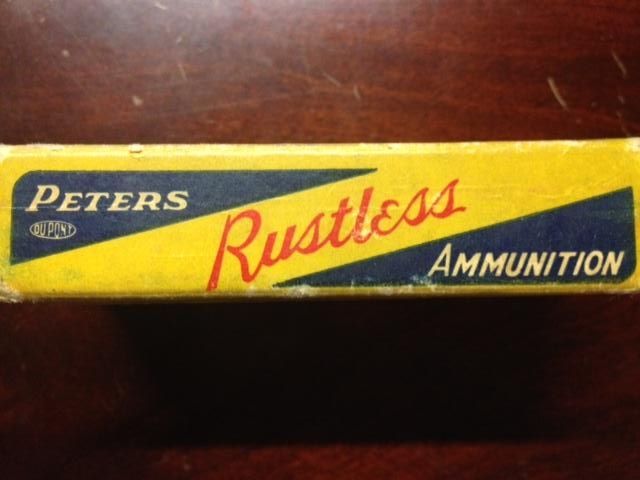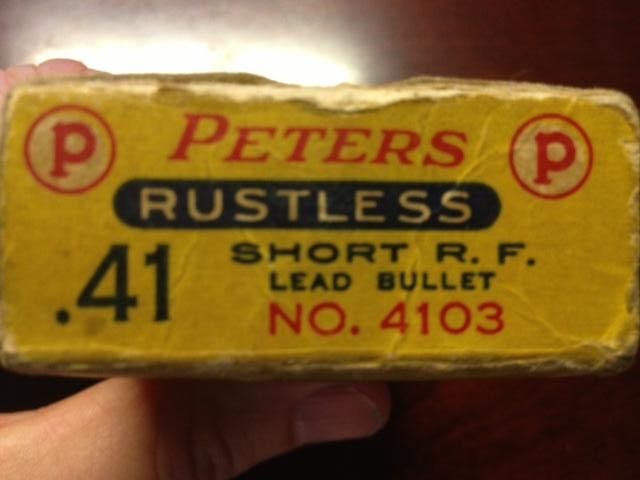Deadly killer....
According to historical anecdotes, (which you can believe, or not) the .41 RF derringer was one of the most feared weapons of its day. It was the preferred arm of the river boat gamblers and others who did not pack a full size handgun.
It was widely feared, because it was (justifiably) regarded as a sure killer. NOT a sure stopper, although likely countless fights were stopped at the sight of that gun.
The reason it was a deadly killer was the low power of the round, the outside lubricated bullet, and the state of medicine at the time.
The .41 RF has about enough power to go "half way through a man". Death from being (torso) shot with the .41 was almost certain, although it might take a couple weeks or so, with such treatment as was possible at the time. The bullet lube was somewhat sticky, and often ammo was carried in a pocket, so the bullet carried dirt, and small foreign objects with it, and stayed in the body. Death from infection was a near certainty.
With the bigger, more powerful rounds (.44, .45) the bullets often completely penetrated the body. When this happened, docs basically "plugged the leaks", and hoped for the best. If the bullet didn't kill you outright, you had basically a 50/50 chance for survival. With the .41 bullet inside you, it was slim, and none, and slim wasn't around much...
Many people in the era knew what would happen, if not why, so the .41RF was a feared gun to face, for those who knew most.



